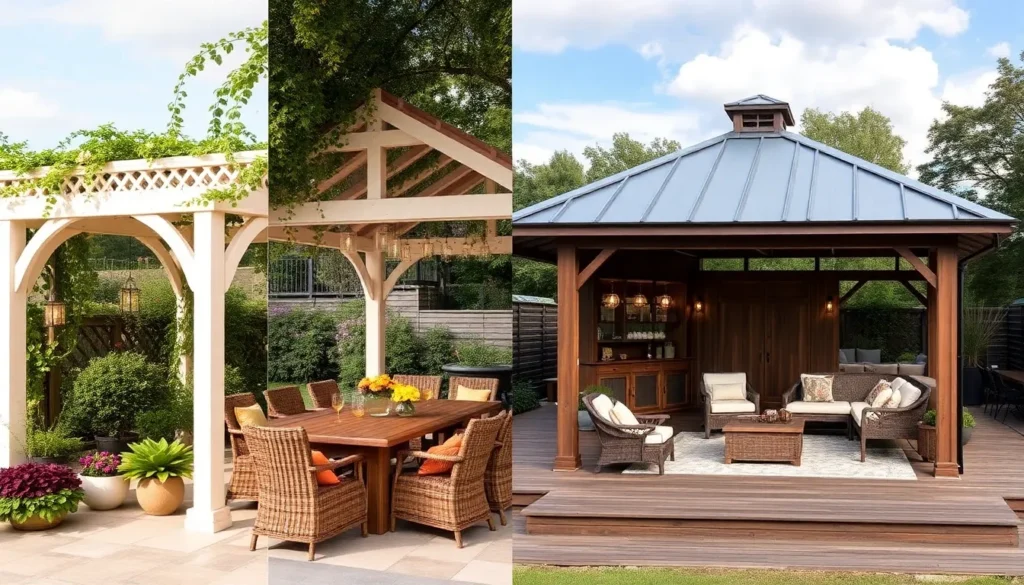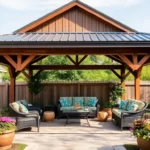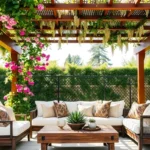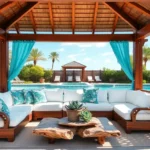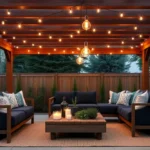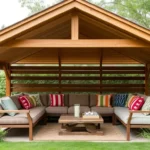Creating an inviting outdoor space is more than just an extension of your home—it’s an opportunity to embrace the beauty of nature with style and comfort. Whether you’re a seasoned outdoor design enthusiast or a homeowner taking the first steps into transforming your backyard, the perfect gazebo can redefine your outdoor experience. Gazebos are not just shelters; they’re focal points that provide both function and flair, offering you a sanctuary to relax, entertain, and enjoy the seasons.
In this article, we’ll explore 15 striking gazebo designs that are sure to spark your creativity and cater to various tastes and budgets. From rustic charm to modern elegance, you’ll discover how each design can enhance your garden’s aesthetic and functionality. So, whether you’re dreaming of a cozy nook or a grand gathering space, these ideas will guide you in creating an outdoor haven that reflects your personal style and meets your practical needs.
Classic Wooden Gazebo Elegance

Adding a classic wooden gazebo to your outdoor space can offer both elegance and functionality. Opt for durable materials like cedar or redwood, known for their resistance to the elements and natural beauty. For a timeless look, consider a hexagonal or octagonal design, which provides visual interest and maximizes space. Remember to position your gazebo on a level ground and secure it with concrete footings to ensure stability and longevity.
To enhance the gazebo’s classic charm, incorporate design elements such as lattice panels or decorative railings. Beginners can start with pre-cut kits that simplify the construction process, while more experienced builders might experiment with custom designs. Advanced tip: Add a weather-resistant roof, such as asphalt shingles or metal, to protect your structure year-round. For added ambiance, install outdoor lighting or hang planters along the perimeter to create a cozy, inviting retreat.
Modern Minimalist Gazebo Structures
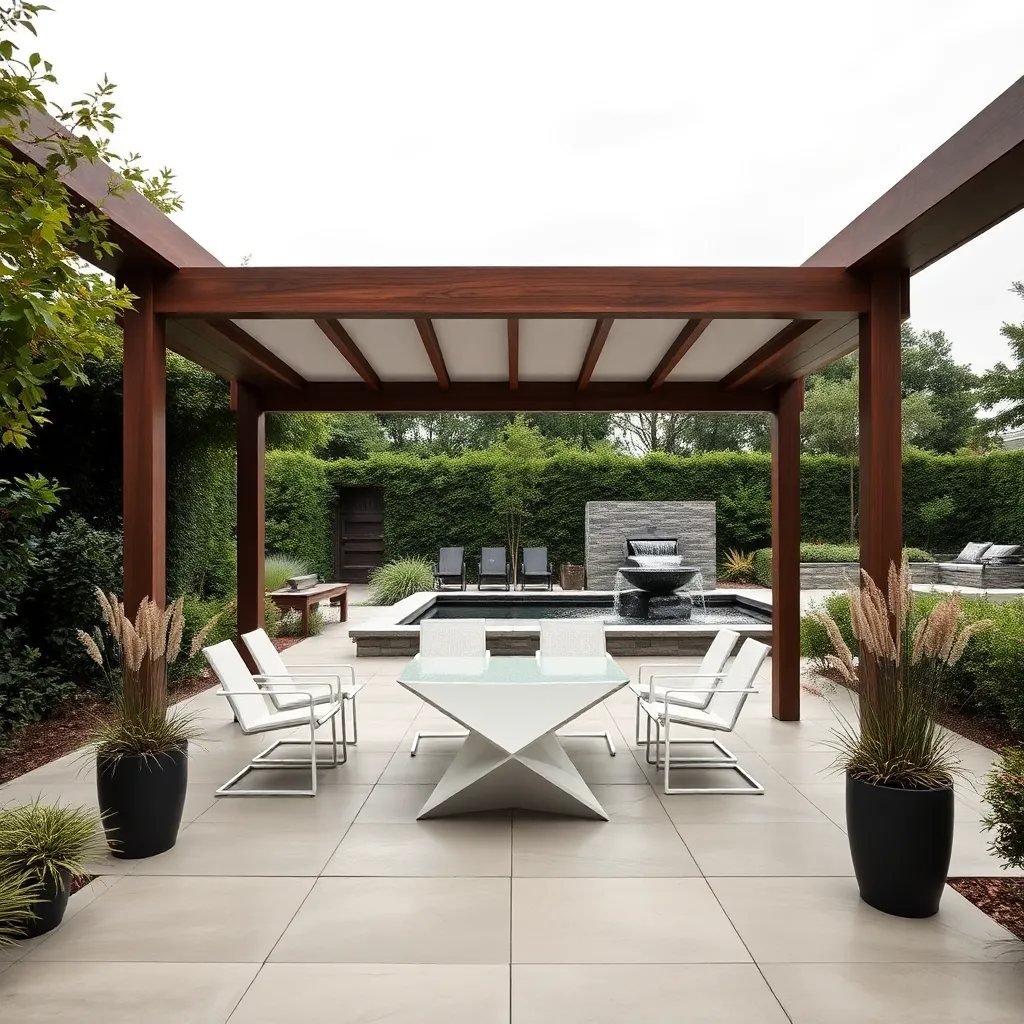
For those who appreciate a sleek and uncluttered aesthetic, modern minimalist gazebo structures are an excellent choice. Opt for materials like metal and glass to achieve a clean, contemporary look. Aluminum frames paired with tempered glass panels create an open and airy environment, allowing natural light to flood the space while providing shelter from the elements. Beginners can start with a basic rectangular design, ensuring the structure complements their existing outdoor décor.
Incorporating advanced design elements can elevate the minimalist gazebo from simple to stunning. Consider integrated lighting solutions such as LED strips along the beams for a subtle glow during evening gatherings. To enhance functionality, install retractable screens for privacy and protection against insects. For the ultimate in customization, advanced DIYers might explore adjustable louvers in the roof, offering dynamic control over sunlight and ventilation. With these thoughtful touches, your gazebo can become a chic focal point in any outdoor space.
Rustic Charm with Timber Designs
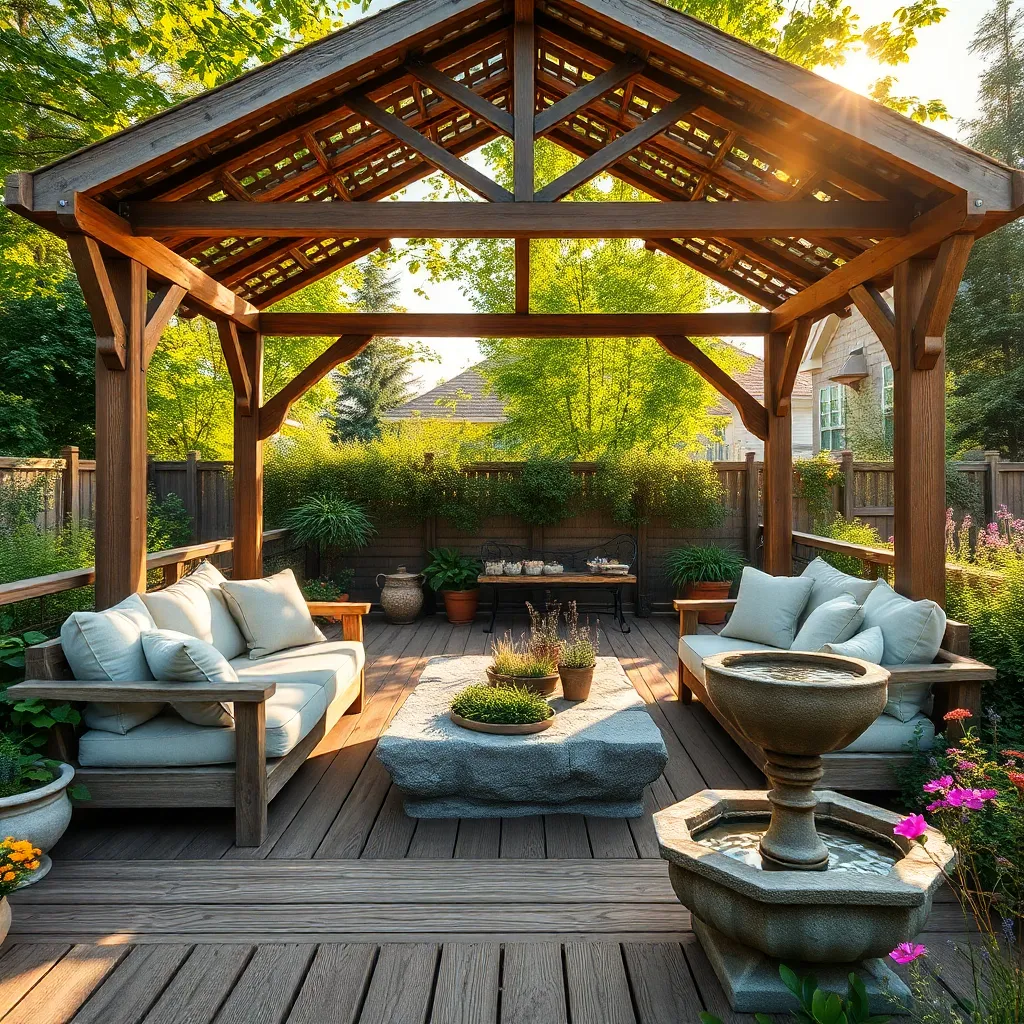
For those who appreciate a more earthy and traditional look, incorporating timber elements into gazebo designs can add rustic charm to any outdoor space. Choose weather-resistant woods like cedar or redwood, which are not only visually appealing but also durable against the elements. Consider incorporating exposed beams or a shingled roof to enhance the natural aesthetics. These details not only create a cozy atmosphere but also offer practical benefits like increased shade and protection from rain.
Beginner builders can start with simple post-and-beam construction, ensuring each component is securely anchored to withstand strong winds. For a more advanced touch, add decorative elements like carved details or lattice panels for a touch of elegance. Don’t forget to treat the timber with a quality sealant to preserve its beauty and longevity. By focusing on these key design elements and construction techniques, you can create a stunning rustic retreat that blends seamlessly with your garden landscape.
Victorian-Style Gazebo Grandeur
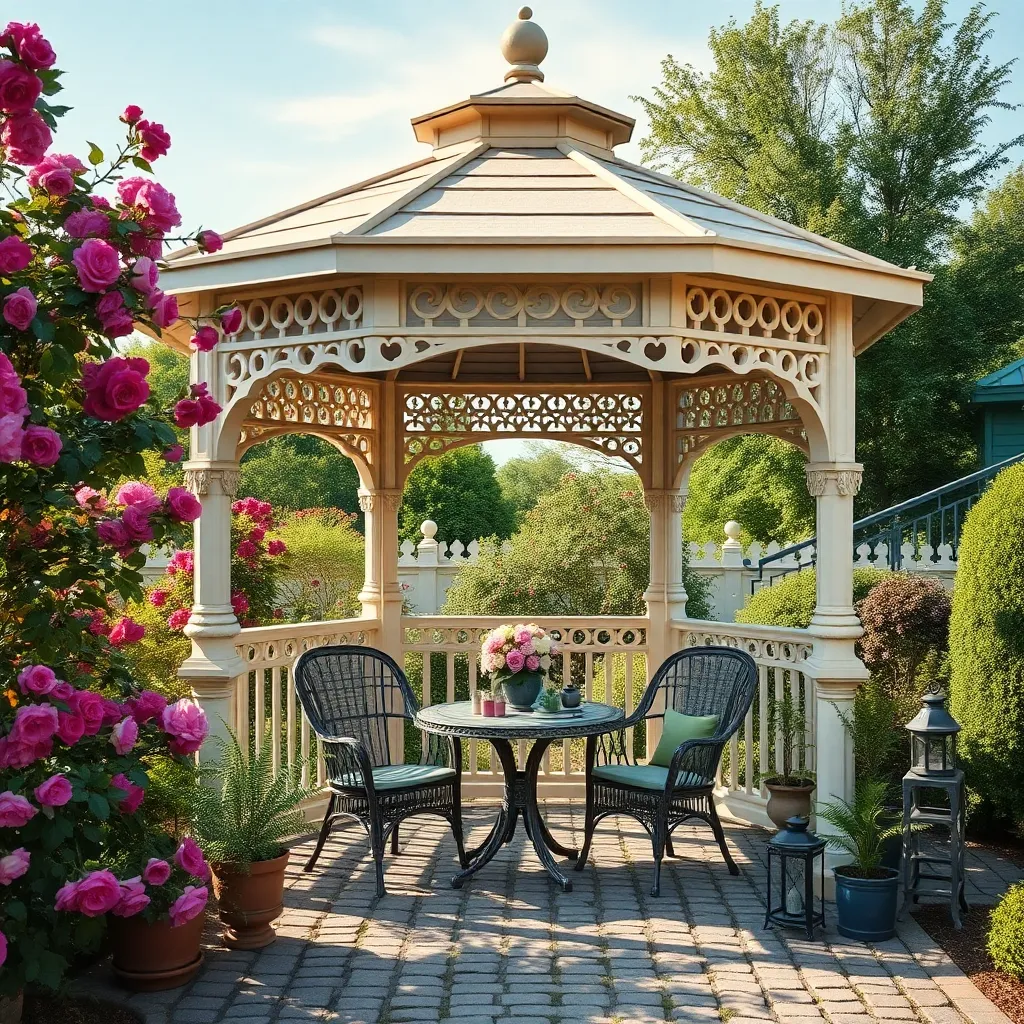
To infuse your outdoor space with timeless elegance, a Victorian-style gazebo offers both charm and functionality. Begin by choosing durable materials such as wrought iron or pressure-treated wood, which provide both the classic aesthetic and longevity. Intricate detailing is key, so consider adding ornamental features like scrollwork, lattice panels, or gingerbread trim to enhance its Victorian flair. For beginners, a prefabricated kit can simplify construction, ensuring the correct proportions and ease of assembly.
Experienced builders can elevate their gazebo with advanced touches like a cupola or decorative spandrels for added sophistication. When selecting dimensions, aim for a diameter of at least 10 to 12 feet to ensure ample space for seating and social gatherings. Strategically placed lighting such as vintage lanterns or string lights can transform the gazebo into a cozy evening retreat. Remember, the right combination of design elements not only elevates your garden’s aesthetics but also creates a welcoming haven year-round.
Sleek Metal Gazebo Options
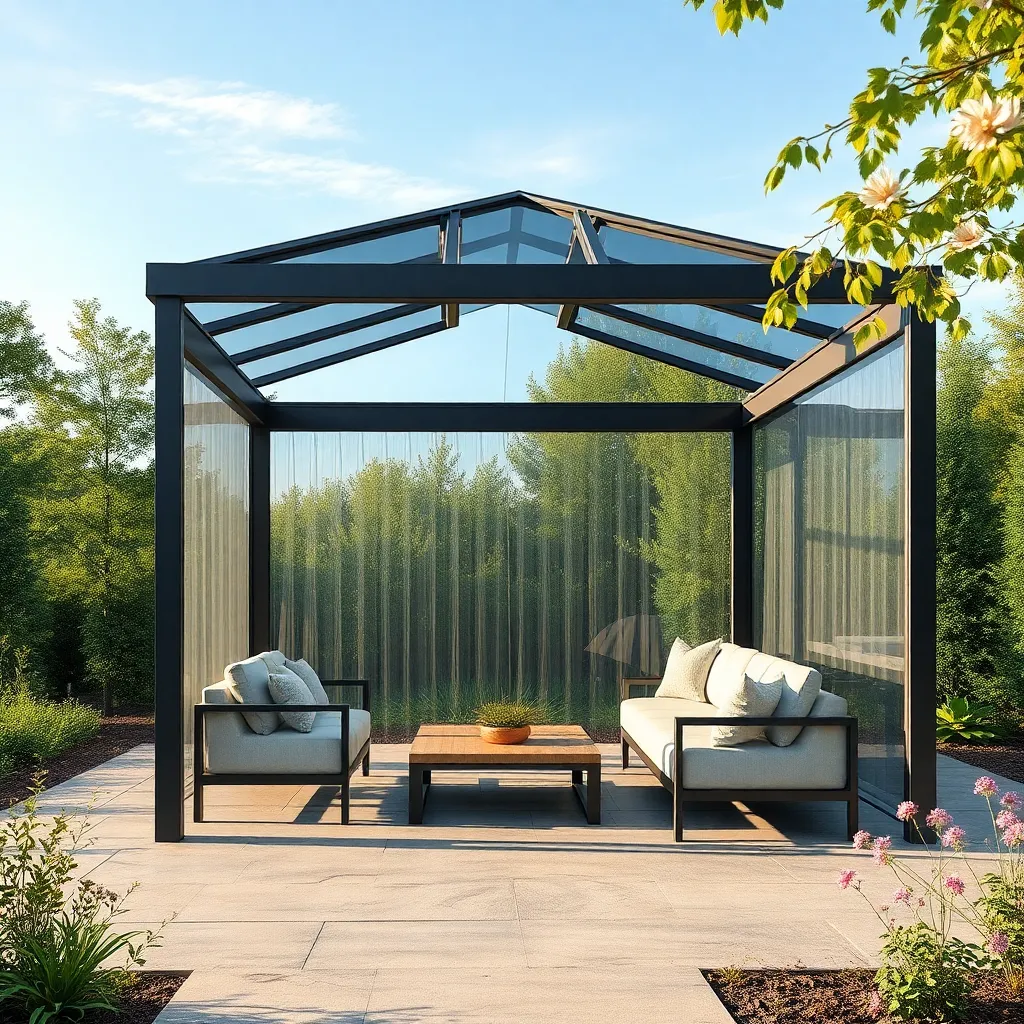
For a contemporary touch, consider integrating a sleek metal gazebo into your outdoor space. These structures are both modern and durable, typically constructed from materials such as aluminum or steel. Aluminum gazebos offer a lightweight option that resists rust and requires minimal maintenance, making them ideal for homeowners seeking a hassle-free setup. If you’re in a windy area, steel might be your best bet due to its robustness, although it may need regular treatments to prevent corrosion.
Embrace clean lines and minimalist designs to complement your home’s exterior with a metal gazebo. Opt for a powder-coated finish to add a layer of protection against the elements while also enhancing the gazebo’s aesthetic appeal. Consider size and placement: a 10×12-foot structure is a standard choice that fits most backyards, but ensure it complements your space without overwhelming it. For those seeking a more advanced touch, think about incorporating integrated LED lighting for evening use or a retractable canopy for versatile shade control.
Compact Gazebos for Small Yards
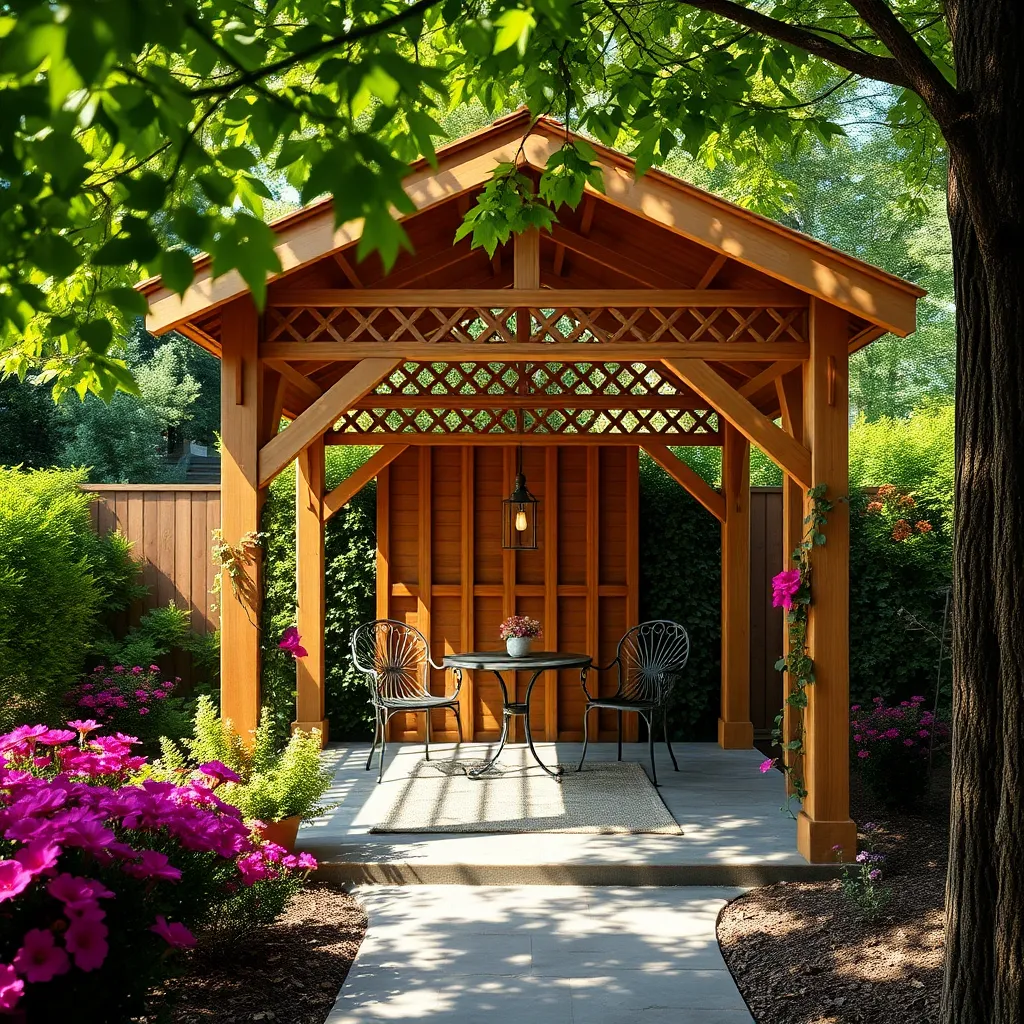
For those with limited outdoor space, compact gazebos are a perfect solution to create a cozy retreat without overwhelming your yard. Opt for a gazebo with a footprint of around 8×8 feet, which provides enough room for a small seating area while maintaining a sense of openness. Materials like lightweight aluminum or weather-treated wood are ideal, as they offer durability without adding excessive weight. Consider incorporating a peaked roof design to channel rainwater efficiently, ensuring longevity and reducing maintenance.
Incorporating multifunctional features can maximize the utility of a small gazebo. For example, built-in benches with storage underneath can help you maintain a clutter-free space. Adding trellises or lattice panels on the sides can support climbing plants, creating a green wall effect that enhances privacy and aesthetics. When selecting a gazebo, look for models that include anchoring kits for stability, especially in windy regions. This approach ensures your gazebo not only fits your space but also offers comfort and style for years to come.
Open-Air Gazebo Concepts
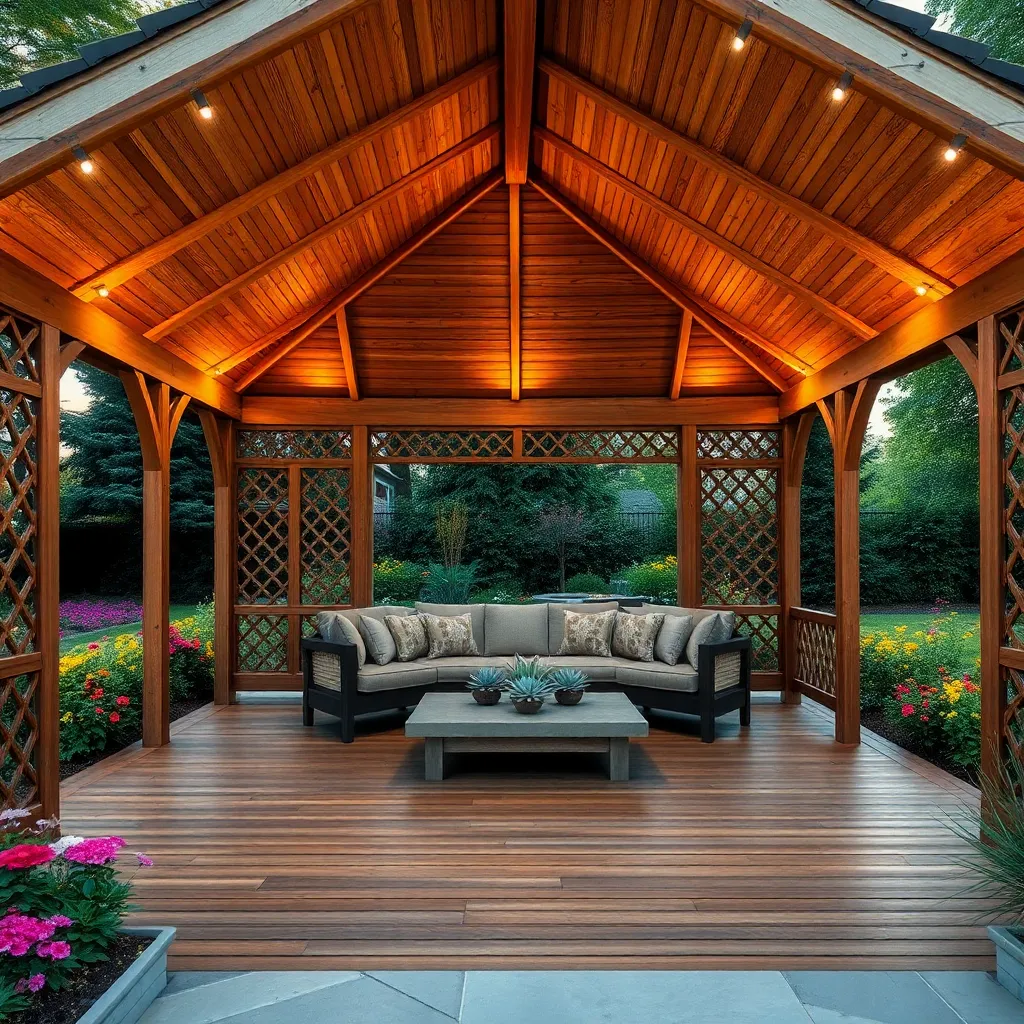
Open-air gazebos provide a seamless connection between your home and garden, offering a versatile space perfect for relaxation and entertainment. When designing your open-air gazebo, consider using durable materials like cedar or treated pine, which resist weather damage and add natural beauty to your landscape. Opt for a minimalist design that includes open sides to enhance airflow and maximize views, creating a light and airy atmosphere that’s perfect for summer gatherings.
For those looking to add a touch of elegance, incorporate elements like a slatted roof or latticework in your design. These not only offer partial shade but also allow climbing plants to thrive, adding a living element to your structure. Ensure your gazebo is proportionate to your yard; a typical size of 10×10 feet can comfortably accommodate a seating area and small dining setup. For a more personalized touch, advanced gardeners might consider integrating built-in planters or lighting features to enhance functionality and ambiance.
Eco-Friendly Gazebo Innovations
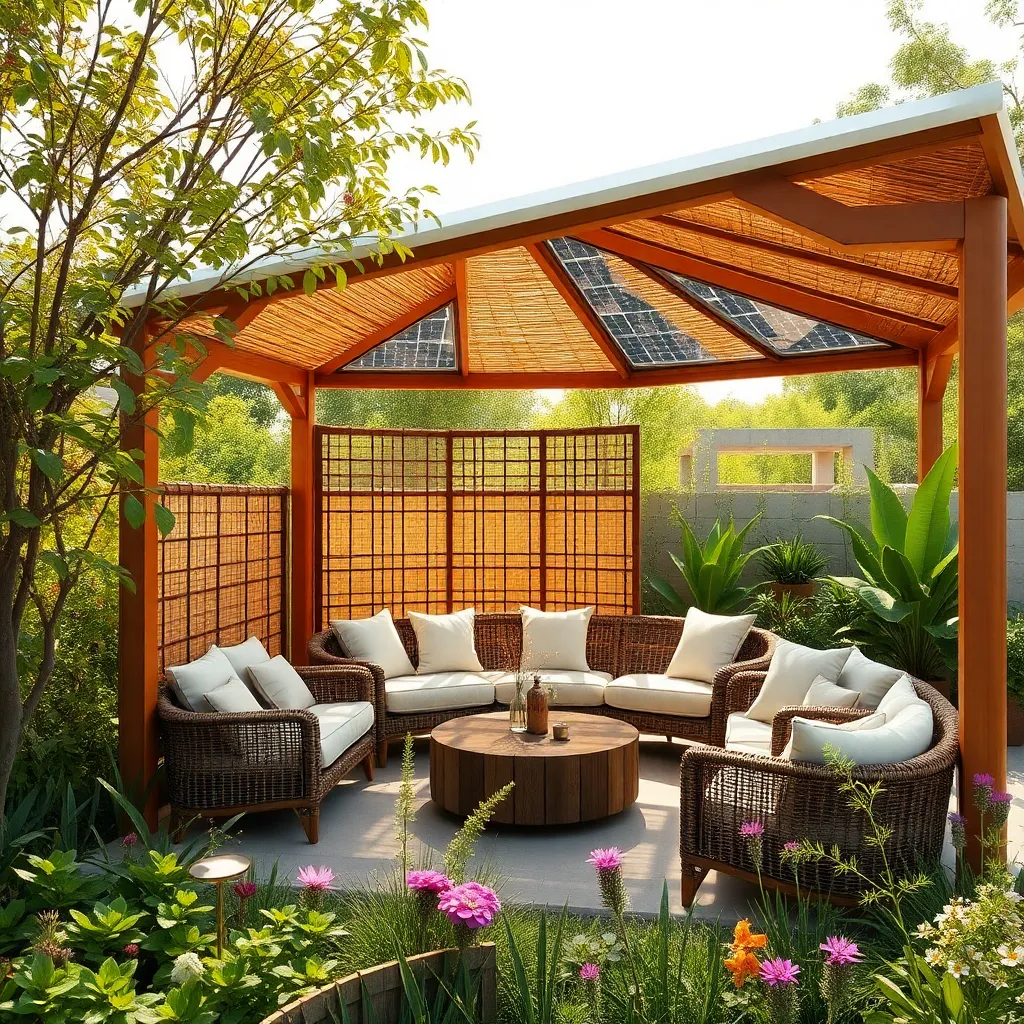
Embrace sustainability with eco-friendly gazebo innovations by choosing materials like reclaimed wood or recycled metal for your structure. These materials not only reduce waste but also add unique character to your outdoor space. For a minimalist yet effective design, consider a living roof that incorporates plants and mosses, which help regulate temperature and promote biodiversity. When constructing your gazebo, aim for a size that suits your space and needs, typically around 10×10 feet for an average backyard, ensuring it complements your garden without overwhelming it.
For those looking to take it a step further, integrate solar panels into the roof design to power ambient lighting or small appliances, turning your gazebo into a sustainable retreat. Opt for water-based finishes to seal the wood, which are less harmful to the environment compared to traditional oil-based products. Additionally, use LED lighting for energy efficiency and consider incorporating natural stone or bamboo elements for added eco-chic appeal. These small yet impactful choices make your gazebo not just a beautiful focal point but also a testament to environmental responsibility.
Gazebos with Integrated Seating
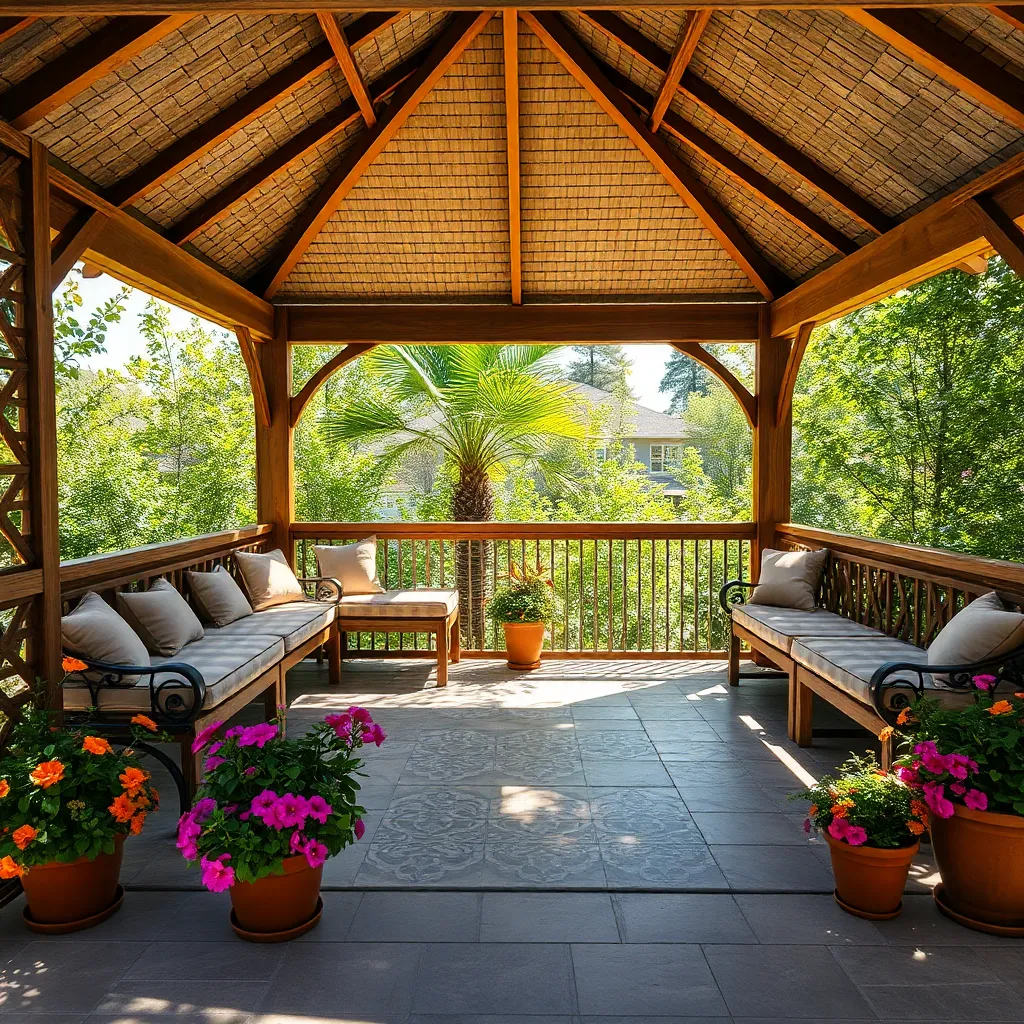
Gazebos with integrated seating offer a seamless blend of functionality and comfort, making them a perfect addition to any outdoor space. For beginners, consider using weather-resistant materials like treated hardwood or composite decking to ensure longevity. These materials are not only durable but also low-maintenance, allowing you to enjoy your gazebo without frequent upkeep. Design elements such as built-in benches can be customized to fit the shape of your gazebo, whether it’s octagonal, square, or rectangular. Ensure the seating is comfortable by adding cushions made from UV-resistant fabrics for both style and durability.
Advanced gardeners might consider incorporating storage options beneath the seating to maximize the utility of the space. This can be achieved by designing hinged seating or pull-out drawers, providing convenient storage for garden tools or outdoor accessories. When planning the layout, ensure there’s ample space for movement by allowing at least 3 feet of clearance between the seating and other elements like tables or planters. For a cohesive look, match the seating material with the gazebo’s structure, and for added ambiance, integrate built-in lighting under the benches for evening use. This thoughtful approach ensures your gazebo is not just a shelter but a versatile and inviting focal point in your garden.
Multi-Functional Gazebo Designs
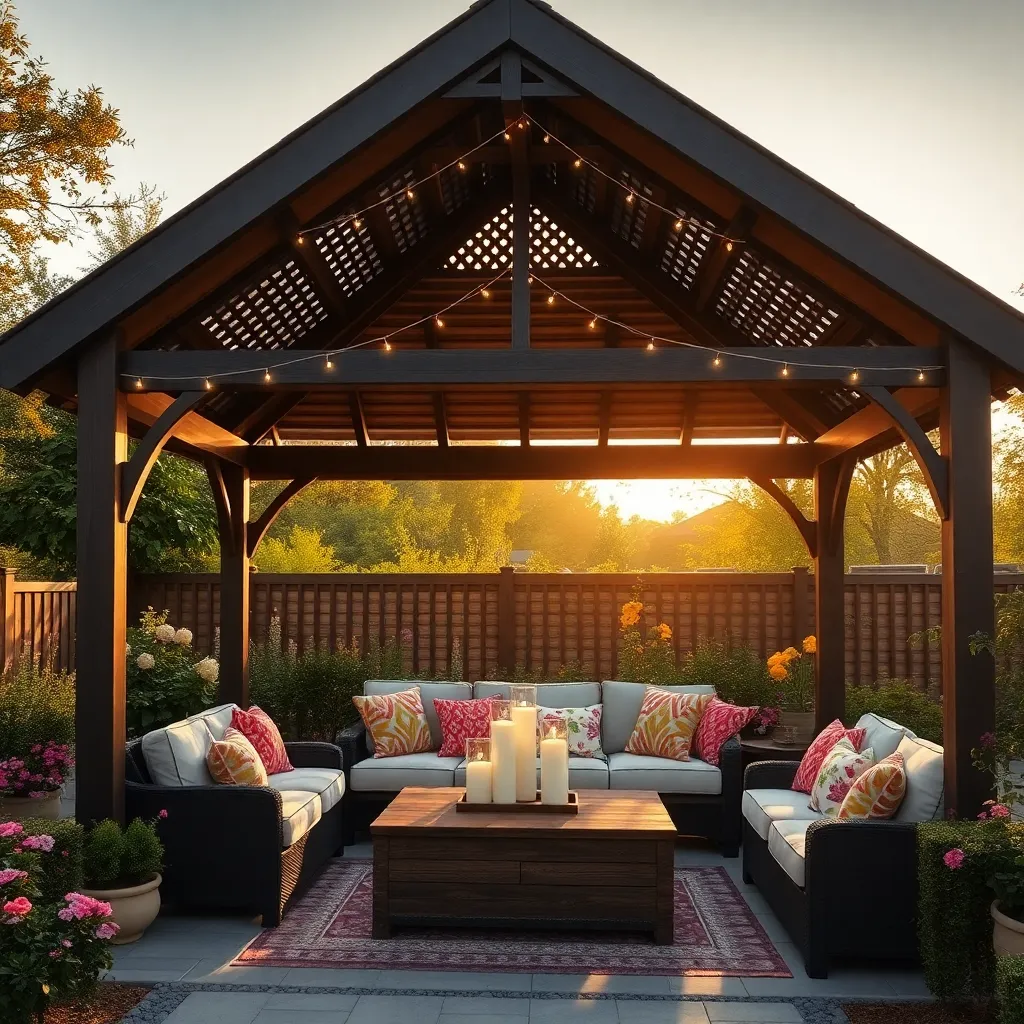
For those seeking versatility, a multi-functional gazebo can be a game-changer in outdoor living. These designs often incorporate features like retractable sidewalls and adjustable roofs, allowing you to adjust for weather conditions or privacy needs. Consider using durable materials such as treated wood or metal to withstand various climates, ensuring longevity. Beginners might start with a prefabricated kit, which provides easy assembly instructions, while experienced DIYers can explore custom designs to maximize space and functionality.
Design elements such as built-in planters or lighting can enhance the gazebo’s utility and ambiance. Incorporate solar-powered lights for eco-friendly illumination, and add planters with herbs or flowers to create a refreshing atmosphere. When planning your gazebo’s dimensions, aim for at least 10×10 feet to comfortably accommodate furniture and guests. For a touch of sophistication, consider integrating a small outdoor kitchen or bar area, using weather-resistant materials like stainless steel and granite for surfaces that stand the test of time.
Gazebos with Built-In Lighting
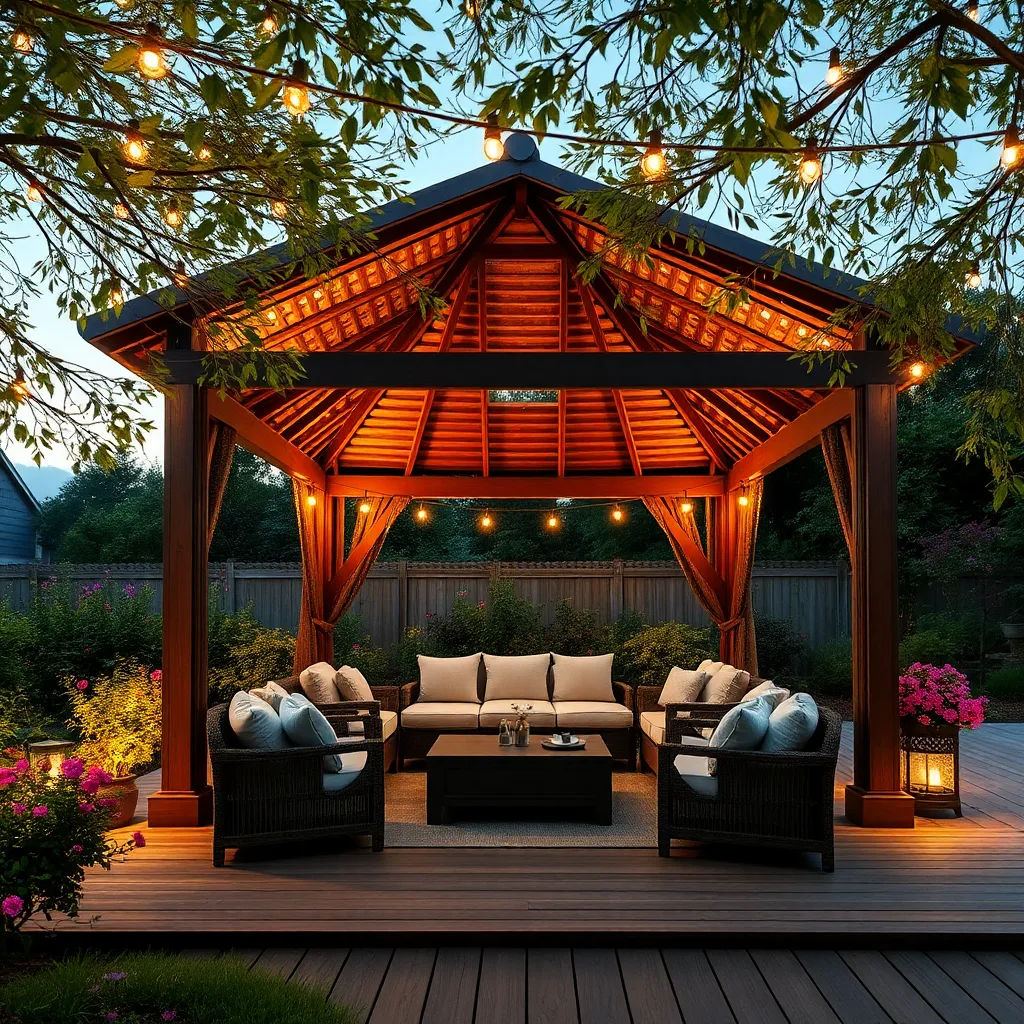
Gazebos with built-in lighting are a brilliant way to enhance your outdoor space, offering both functionality and ambiance. Opt for energy-efficient LED lighting to keep your electricity costs low while providing ample illumination. For a seamless integration, consider installing recessed lights in the gazebo’s ceiling or using string lights along the frame. Using weather-resistant materials like treated wood or powder-coated aluminum ensures durability and can withstand various climates, making your lighting setup both long-lasting and efficient.
To maximize the impact of your gazebo lighting, utilize a layered lighting approach. Combine task lighting for specific areas, like a dining table, with ambient lighting to create a cozy atmosphere. Installing dimmer switches allows you to adjust the mood to suit any occasion, from a lively barbecue to a serene evening under the stars. For an advanced touch, consider smart lighting systems that can be controlled via smartphone apps, providing convenience and the ability to change light colors or intensity with a simple tap.
Weather-Resistant Gazebo Materials
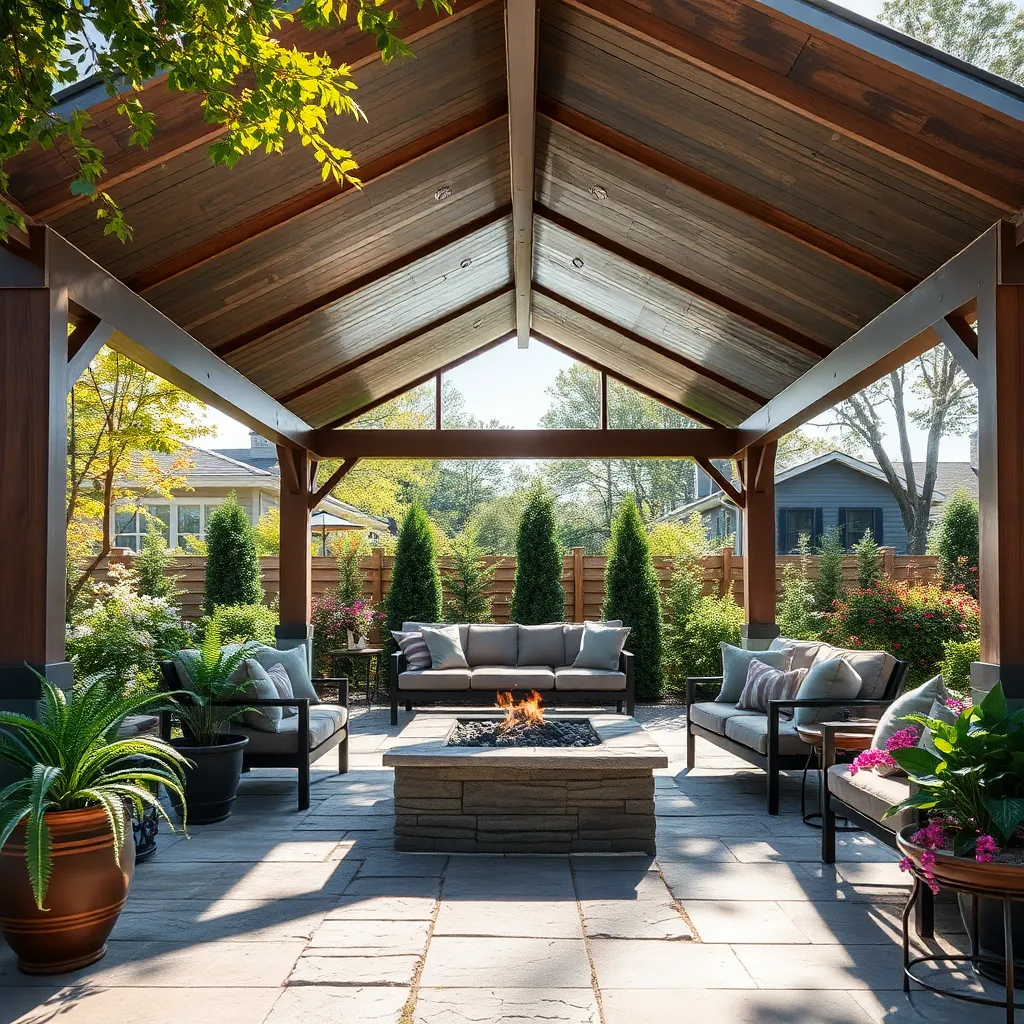
Choosing the right materials for a weather-resistant gazebo is crucial for longevity and durability. Opt for materials like powder-coated aluminum or galvanized steel, which are excellent for withstanding harsh weather conditions. For the roofing, consider polycarbonate panels or weather-treated wood that can endure various climates, offering both protection and aesthetic appeal. These materials not only enhance the lifespan of your gazebo but also reduce maintenance efforts, making them ideal for homeowners seeking a low-maintenance yet stylish outdoor structure.
For a truly resilient design, incorporate features like UV-resistant fabrics for canopy covers and rust-resistant hardware to prevent deterioration. Beginners can start with pre-fabricated kits that simplify installation, while seasoned DIY enthusiasts might explore custom builds with integrated drainage systems to handle rain efficiently. By focusing on these elements, your gazebo can become a cozy, reliable retreat, perfect for enjoying the outdoors in any weather. Remember, the key is to balance aesthetics with functionality, ensuring your gazebo remains both beautiful and robust.
Pergola-Inspired Gazebo Designs

Incorporating pergola-inspired elements into your gazebo design can add a modern twist to your outdoor space. Focus on using open-roof beams, which allow sunlight to filter through while providing partial shade—a perfect balance for outdoor relaxation. For beginners, consider using pressure-treated wood or aluminum, as these materials are durable and require minimal maintenance. More advanced builders might experiment with incorporating retractable canopies for added versatility, allowing you to adjust to different weather conditions effortlessly.
When planning your pergola-inspired gazebo, ensure the structure complements your existing landscape. Opt for a simple square or rectangular shape with clean lines for a contemporary look. Dimensions should be proportional to your yard, generally ranging from 8×8 feet for smaller areas to 12×16 feet for larger spaces. For a sophisticated touch, add climbing plants like wisteria or jasmine to the pergola beams, which can enhance the ambiance and provide additional shade over time. This approach not only elevates your gazebo’s aesthetic but also integrates it seamlessly into your garden environment.
Gazebos for Garden Integration
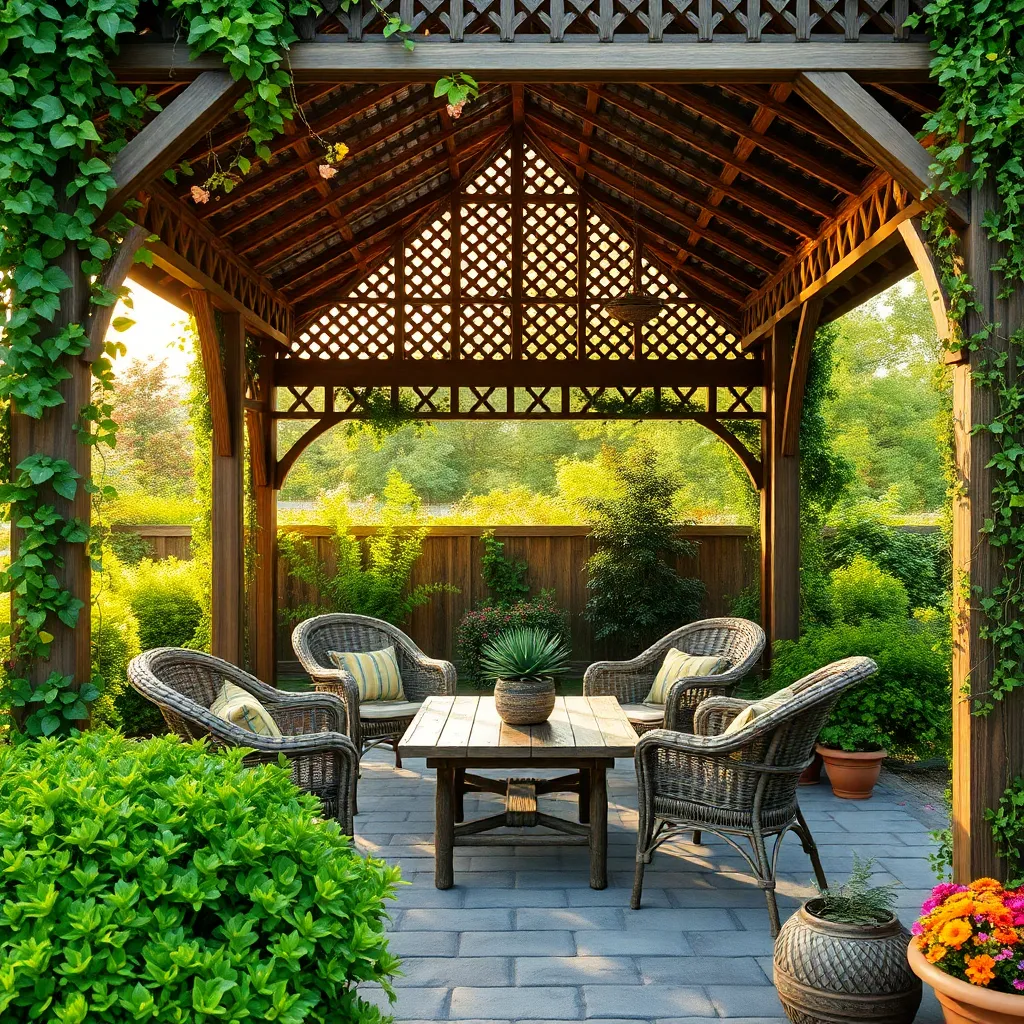
Integrating a gazebo into your garden can seamlessly blend function and beauty, enhancing your outdoor space dramatically. For a natural look, consider using wooden materials like cedar or redwood, which not only offer durability but also complement the organic surroundings. Beginners might start with a simple rectangular design, while those seeking a more advanced project could incorporate lattice walls or climbing plants, creating a living structure that evolves with the seasons.
For a truly transformative effect, pay attention to the details that make your gazebo stand out. Opt for a hexagonal or even octagonal shape to add visual interest and provide a panoramic view of your garden. Use weather-resistant roofing materials such as polycarbonate panels or metal sheeting to ensure longevity. To enhance usability, consider adding built-in seating or planters along the edges. These features not only increase comfort but also integrate the gazebo more fully into your garden landscape.
Roof Styles for Gazebo Appeal
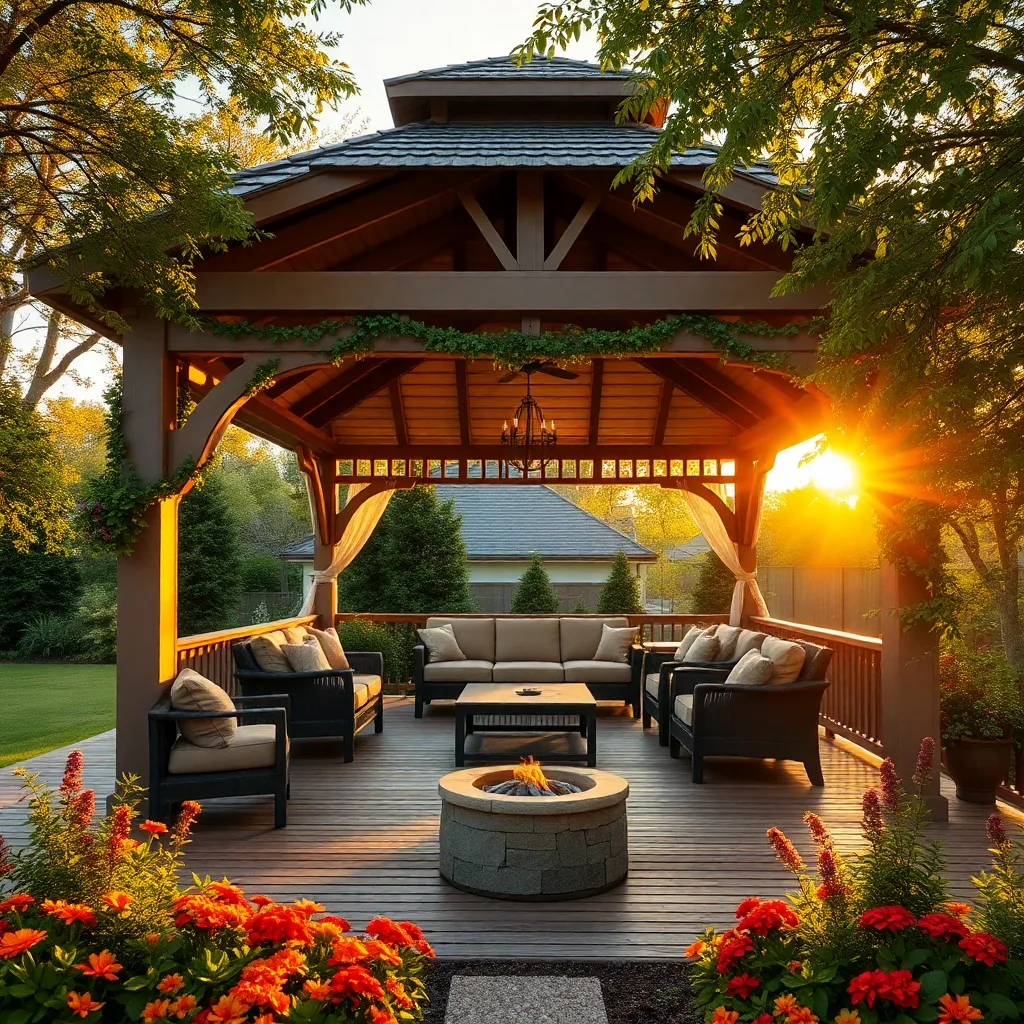
Choosing the right roof style for your gazebo can significantly enhance its overall appeal and functionality. For a classic look, consider a hipped roof, which offers excellent stability and a symmetrical design that complements any garden setting. If you’re in a region prone to heavy rainfall, a steeply pitched roof is ideal as it efficiently channels water away, preventing pooling and potential damage. For materials, opt for durable options like cedar or metal, both of which provide longevity and a polished finish.
For those wanting a modern twist, a flat roof with a slight slope can create a sleek, contemporary aesthetic. This style is perfect for integrating solar panels, turning your gazebo into an eco-friendly retreat. Advanced builders might explore a curved or custom-designed roof to add a unique architectural element that stands out in any backyard. Remember to consider the local climate and your garden’s character when selecting materials and designs to ensure your gazebo remains a cherished outdoor feature for years to come.
Conclusion: Creating Beautiful Outdoor Spaces
As we explored the 15 gazebo designs, each one served as a metaphor for key relationship concepts: from the importance of a strong foundation to the beauty of adaptability and creativity in partnership. We’ve seen how the balance of open spaces and sheltered areas mirrors the need for both connection and independence in relationships. Just as a gazebo invites gatherings, so too does nurturing a relationship invite deeper bonds and shared experiences.
Now, take immediate action by selecting one design that resonates with you and discuss with your partner how you can incorporate its essence into your relationship. Whether it’s fostering open communication, creating a safe space for growth, or embracing flexibility, let it be a step toward strengthening your bond.
To ensure these insights remain at your fingertips, bookmark this article as a valuable resource for ongoing relationship enhancement. As you build and nurture your relationship with intention and creativity, remember that the effort you invest today lays the groundwork for a thriving partnership tomorrow. Let this be your blueprint for relationship success, where every step forward is one of transformation and lasting connection.

